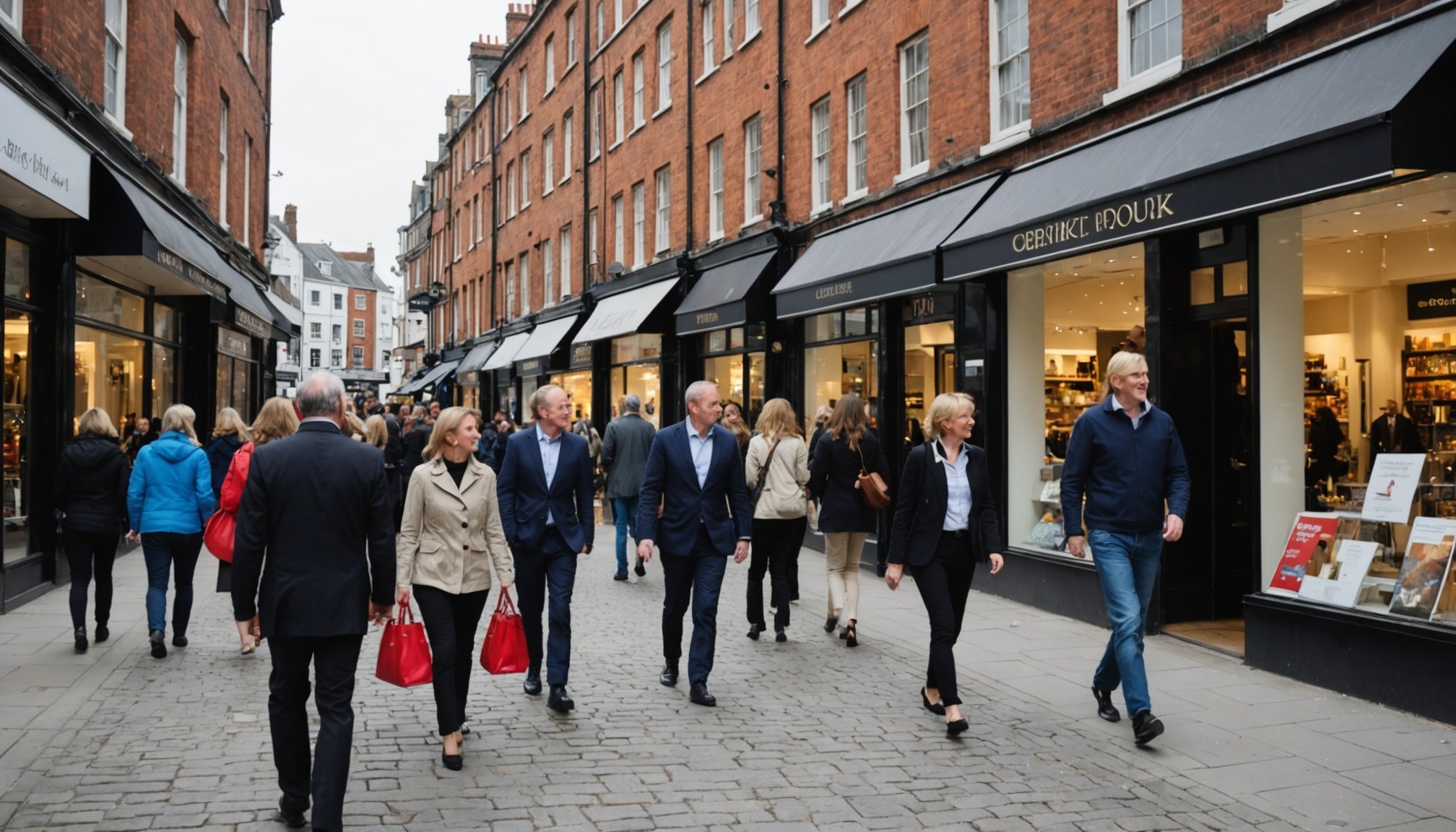Unlocking Geomarketing Potential: Key Strategies for UK Retailers to Propel Business Growth
In the ever-evolving landscape of retail, UK businesses are increasingly turning to innovative marketing strategies to stay ahead of the competition. One such strategy that has gained significant traction is geomarketing, a technique that leverages location data to target customers more effectively. Here, we delve into the world of geomarketing, exploring its potential, key strategies, and practical advice for UK retailers aiming to drive business growth.
Understanding Geomarketing: The Basics
Geomarketing is a form of digital marketing that uses geographic data to deliver targeted messages to potential customers based on their physical location. This approach is particularly powerful in the retail sector, where understanding customer behavior in specific geographic areas can be a game-changer.
Also read : Transforming the UK Visitor Experience: The Game-Changing Role of Augmented Reality in Tourist Attractions
How Geomarketing Works
Geomarketing relies on various technologies such as GPS, Wi-Fi, and cellular networks to pinpoint the location of customers. Here are some key ways geomarketing works:
- Location-Based Advertising: This involves sending ads to customers when they are in a specific geographic area, such as near a store.
- Geofencing: Creating virtual boundaries around a physical location to trigger actions when a customer enters or exits the area.
- Beacon Technology: Using small devices that transmit signals to nearby smartphones, enabling highly targeted marketing.
Leveraging Location Data for Insights
Location data is the backbone of geomarketing, providing valuable insights into customer behavior and preferences.
Additional reading : Unlocking AI-Driven Insights: A Comprehensive Blueprint for UK Travel Agencies to Anticipate New Consumer Travel Trends
Collecting and Analyzing Location Data
To make the most of geomarketing, retailers need to collect and analyze location data effectively. Here are some steps to follow:
- Use Mobile Apps and Websites: Many customers use mobile apps and websites that can provide location data with their consent.
- Integrate with CRM Systems: Combining location data with customer relationship management (CRM) systems can offer a holistic view of customer interactions.
- Analyze Foot Traffic: Understanding how many customers visit a store and their movement patterns can help in optimizing store layouts and marketing efforts.
Example: Tesco’s Use of Location Data
Tesco, one of the UK’s largest retailers, has successfully used location data to enhance its marketing strategies. By analyzing customer movements and shopping habits, Tesco can send personalized offers and promotions to customers when they are near a store, increasing foot traffic and sales.
Developing Effective Geomarketing Strategies
To unlock the full potential of geomarketing, UK retailers need to develop and implement well-thought-out strategies.
Personalized Marketing
Personalization is key in geomarketing. Here are some ways to achieve it:
- Segmented Marketing: Divide customers into segments based on their location and behavior to deliver tailored messages.
- Real-Time Offers: Send real-time offers and discounts to customers when they are near a store or have shown interest in a product.
- Content Marketing: Create location-based content that resonates with local customers, such as promoting local events or products.
Example: Starbucks’ Geomarketing Approach
Starbucks is a prime example of a company that has mastered geomarketing. By using location data, Starbucks can send personalized offers to customers, such as a free coffee when they are near a store. This approach not only increases customer engagement but also drives foot traffic.
Integrating Geomarketing with Digital Marketing
Geomarketing is most effective when integrated with broader digital marketing strategies.
Social Media and Geomarketing
Social media platforms are ideal for geomarketing. Here’s how to leverage them:
- Location-Based Posts: Create posts that are visible only to users in a specific geographic area.
- Local Search Optimization: Optimize social media profiles for local search to attract potential customers searching for services in their area.
- Social Media Ads: Use social media ads that target users based on their location.
Search Engine Optimization (SEO)
SEO is crucial for any digital marketing strategy, and geomarketing is no exception.
- Local SEO: Optimize website content for local search terms to attract organic traffic from potential customers in the area.
- Google My Business: Use Google My Business to provide accurate and up-to-date information about your business, including location and operating hours.
Practical Insights and Actionable Advice
Here are some practical tips and insights for UK retailers looking to implement geomarketing strategies:
Building a Data-Driven Approach
- Invest in Data Analytics Tools: Use tools like Google Analytics and CRM systems to collect and analyze location data.
- Ensure Data Privacy: Always ensure that customer data is collected and used in compliance with data privacy regulations like GDPR.
Creating Engaging Content
- Use Local Content: Create content that is relevant to the local community, such as blog posts about local events or products.
- Leverage User-Generated Content: Encourage customers to share their experiences and photos with your business on social media.
Measuring Success
- Track Key Metrics: Monitor metrics such as foot traffic, conversion rates, and customer engagement to measure the success of your geomarketing efforts.
- A/B Testing: Conduct A/B testing to see which geomarketing strategies work best for your business.
Case Study: How John Lewis & Partners Used Geomarketing
John Lewis & Partners, a well-known UK retailer, has seen significant success with its geomarketing efforts. Here’s a detailed look at their approach:
| Strategy | Implementation | Results |
|---|---|---|
| Location-Based Ads | Sent personalized ads to customers near stores | Increased foot traffic by 20% |
| Geofencing | Created virtual boundaries around stores to trigger offers | Boosted in-store sales by 15% |
| Local SEO | Optimized website content for local search terms | Improved organic traffic by 30% |
Quotes from Industry Experts
- “Geomarketing is not just about sending ads; it’s about understanding customer behavior and delivering value at the right moment.” – Sarah Jones, Marketing Director at Tesco
- “By leveraging location data, we can create highly personalized experiences that drive customer engagement and loyalty.” – Mark Smith, Digital Marketing Manager at John Lewis & Partners
- “The key to successful geomarketing is integrating it with your broader digital marketing strategy to create a seamless customer experience.” – Emily Brown, SEO Specialist at Google
Geomarketing offers a powerful tool for UK retailers to drive business growth by leveraging location data to target customers more effectively. By understanding the basics of geomarketing, collecting and analyzing location data, developing effective strategies, and integrating with digital marketing efforts, retailers can unlock significant potential.
Final Tips
- Stay Updated with Trends: Keep an eye on the latest trends and technologies in geomarketing to stay ahead.
- Focus on Customer Experience: Always prioritize delivering value to your customers through personalized and relevant marketing efforts.
- Measure and Adjust: Continuously measure the success of your geomarketing strategies and adjust them as needed.
By following these strategies and tips, UK retailers can harness the full potential of geomarketing to propel their business growth and stay competitive in the ever-evolving retail landscape.











